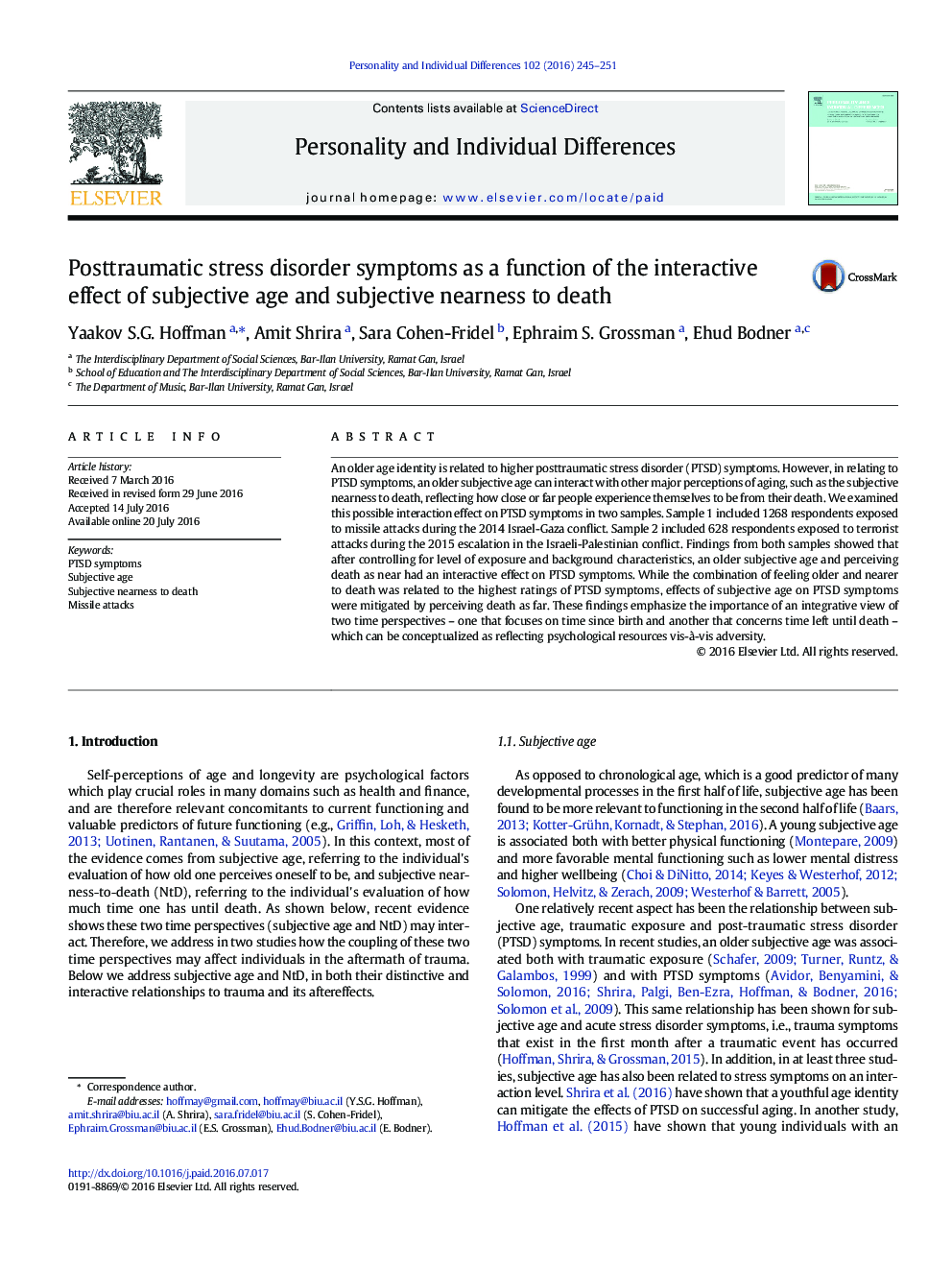| Article ID | Journal | Published Year | Pages | File Type |
|---|---|---|---|---|
| 889679 | Personality and Individual Differences | 2016 | 7 Pages |
•We examined relationships between time perspectives and PTSD symptoms in two samples.•An older subjective age was associated with more PTSD symptoms in young adults.•Subjective nearness to death was related to more PTSD symptoms in young adults.•Effects of an old subjective age on PTSD were weakened by feeling distant to death.•PTSD symptoms were highest when one felt both older and nearer to death.
An older age identity is related to higher posttraumatic stress disorder (PTSD) symptoms. However, in relating to PTSD symptoms, an older subjective age can interact with other major perceptions of aging, such as the subjective nearness to death, reflecting how close or far people experience themselves to be from their death. We examined this possible interaction effect on PTSD symptoms in two samples. Sample 1 included 1268 respondents exposed to missile attacks during the 2014 Israel-Gaza conflict. Sample 2 included 628 respondents exposed to terrorist attacks during the 2015 escalation in the Israeli-Palestinian conflict. Findings from both samples showed that after controlling for level of exposure and background characteristics, an older subjective age and perceiving death as near had an interactive effect on PTSD symptoms. While the combination of feeling older and nearer to death was related to the highest ratings of PTSD symptoms, effects of subjective age on PTSD symptoms were mitigated by perceiving death as far. These findings emphasize the importance of an integrative view of two time perspectives – one that focuses on time since birth and another that concerns time left until death – which can be conceptualized as reflecting psychological resources vis-à-vis adversity.
